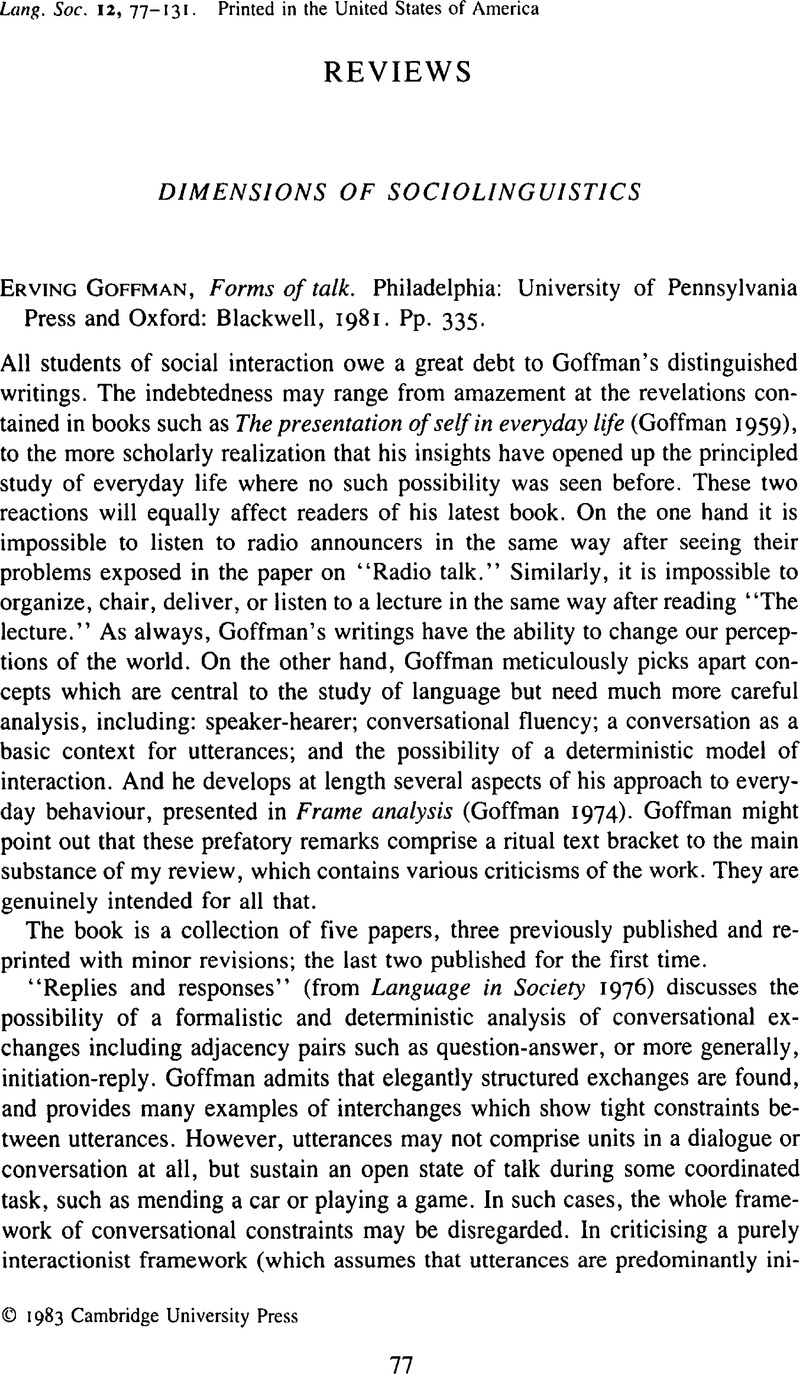Crossref Citations
This article has been cited by the following publications. This list is generated based on data provided by Crossref.
Wilson, John
1987.
The sociolinguistic paradox: Data as a methodological product.
Language & Communication,
Vol. 7,
Issue. 2,
p.
161.
Leith, Dick
Norman, Peter
Martin‐Jones, Marilyn
Corson, David
and
Redfern, Angela
1988.
Book reviews.
Language and Education,
Vol. 2,
Issue. 3,
p.
191.
Garcia Landa, Jose Angel
2007.
Netiquette, Politeness, Strategy and Wisdom.
SSRN Electronic Journal,
Reyes, Antonio
2014.
Bush, Obama.
Journal of Language and Politics,
Vol. 13,
Issue. 3,
p.
538.
Steinberg, R. Lila
2014.
The Occupy Assembly.
Journal of Language and Politics,
Vol. 13,
Issue. 4,
p.
702.
Zappettini, Franco
2014.
‘A badge of Europeanness’.
Journal of Language and Politics,
Vol. 13,
Issue. 3,
p.
375.
Mitchell, Nathaniel
2015.
Interdisciplinary Perspectives on Im/politeness.
Vol. 14,
Issue. ,
p.
121.
Yoon, Sang-Seok
2015.
Interdisciplinary Perspectives on Im/politeness.
Vol. 14,
Issue. ,
p.
97.
Steinberg, Rebecca Lila
2016.
Occupy.
Vol. 83,
Issue. ,
p.
127.
Pauletto, Franco
2020.
L’analisi della conversazione per valutare l’autenticità dei materiali audio per l’insegnamento dell’italiano L2: una proposta metodologica.
EuroAmerican Journal of Applied Linguistics and Languages,
Vol. 7,
Issue. 2,
p.
28.



